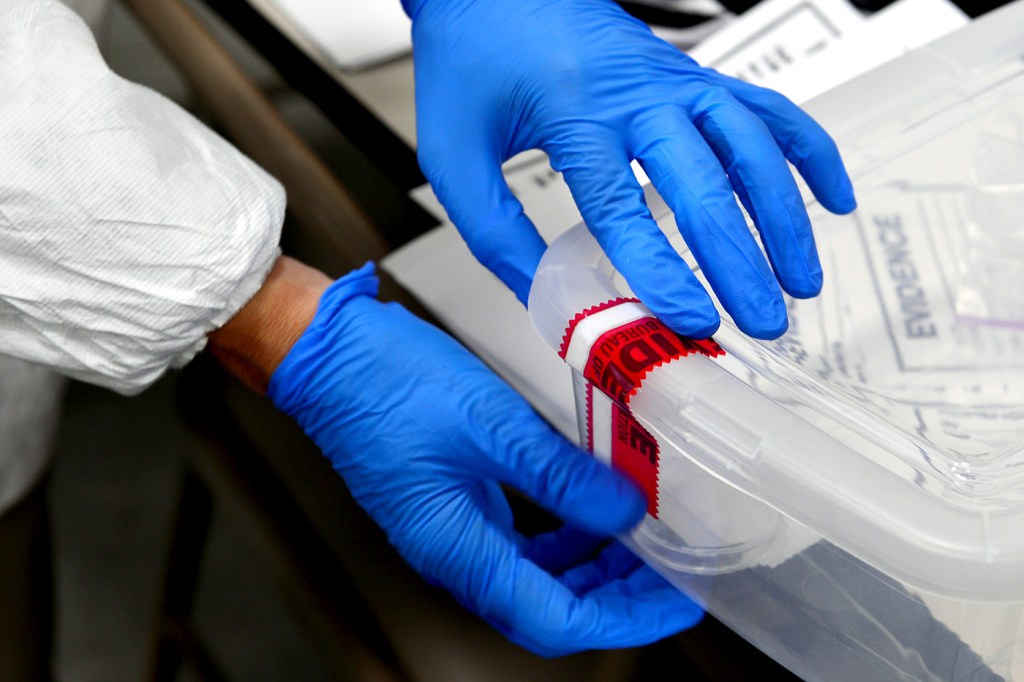Law professor: Abundance of DNA evidence not enough to prevent wrongful convictions

As we enter an era in which DNA evidence is routinely used in criminal investigations, errors that led to wrongful convictions—including mistakes later corrected with DNA tests—may seem to be fading into history. This, however, isn’t true, says law and criminal justice professor Daniel Medwed, who edited the book, Wrongful Convictions and the DNA Revolution, which was published last month.
Many of the underlying issues that plagued the U.S. criminal justice system before DNA evidence rose to the fore still exist, he says, and will continue to produce flawed convictions unless they’re remedied.
Here, Medwed explores some of those procedural deficiencies as well as the deeply rooted sense of justice that animates his work.
Why do wrongful convictions occur, and what are some of the factors that lead to convicting an innocent person?
The phrase “wrongful convictions” could encompass a range of flawed convictions. Yet the concept typically refers to the case of a factually innocent person: Someone who simply didn’t commit the crime for which she was
A decline in DNA exonerations will not signify that the system has become error-proof. Rather, the factors that initially gave rise to those wrongful convictions will remain…”
Daniel Medwed
Law and criminal justice professor
convicted. I think innocence cases largely derive from good-faith mistakes rather than malevolence on the part of, say, police or prosecutors. Those mistakes include eyewitnesses who simply get it wrong; zealous prosecutors who can’t look objectively at contrary evidence because of tunnel vision; suspects who falsely confess to crimes due to cognitive deficits; defense lawyers who are overworked and underpaid; and reliance on forensic “science” that lacks sufficient grounding in the scientific method.
In Wrongful Convictions and the DNA Revolution, you examine what we’ve learned after 25 years of exonerating innocent prisoners through DNA evidence. What are those lessons?
We’ve learned about the substantive factors that contribute to wrongful convictions, as mentioned earlier, but we’ve also unearthed the procedural deficiencies in our system. The more than 300 documented exonerations of innocent prisoners through post-conviction DNA tests from 1989 to 2014 show that the traditional mechanisms of error correction in our system are insufficient. The direct appeal (in which a defendant challenges a criminal conviction secured at the trial level to a higher court), is ill-suited to address errors based in fact as opposed to law. And classic “collateral” remedies, such as habeas corpus, are replete with statutes of limitations and other procedural hurdles too high even for the innocent to clear. Going forward, we need to address both the substantive and the procedural flaws that can yield miscarriages of justice.
What has motivated you to study wrongful convictions and DNA evidence, and what inspires you to keep studying it?
First, inspiration comes from deeply-held personal beliefs. In my view, the hallmark of a civilized society is the extent to which we protect those in the weakest position to defend themselves—most notably, criminal suspects facing the potentially massive power of the government. All too often, criminal suspects are people of color with limited financial resources. This dynamic not infrequently produces disturbing outcomes for the individual, and sometimes results in the conviction of an innocent person. Imagine what it must be like to have the system fail you so dramatically, to have your cries of innocence fall on deaf, cynical ears. Thinking about that provides all the motivation I need.
Second, I feel as if we’re at a unique stage in history. DNA testing is now commonly used at the front end of the criminal process to weed out the innocent before a case even gets to trial. That means post-conviction DNA exonerations of inmates will inevitably dwindle to almost nothing; many of the DNA cases that generate headlines concern prisoners convicted years ago. But a decline in DNA exonerations will not signify that the system has become error-proof. Rather, the factors that initially gave rise to those wrongful convictions will remain and infect criminal cases that lack biological evidence suitable for DNA testing at all. Only an estimated 10 to 20 percent of criminal cases have testable biological evidence at all; what’s more, that evidence is often lost, destroyed, or degraded over time. So, I think we need to capitalize on the lessons learned from the DNA era to reform the underlying sources of error for all cases. And we need to do this before the rate of DNA exonerations wanes too much and the public gets the misimpression that the innocence problem is fixed.
Photo via Flickr.





